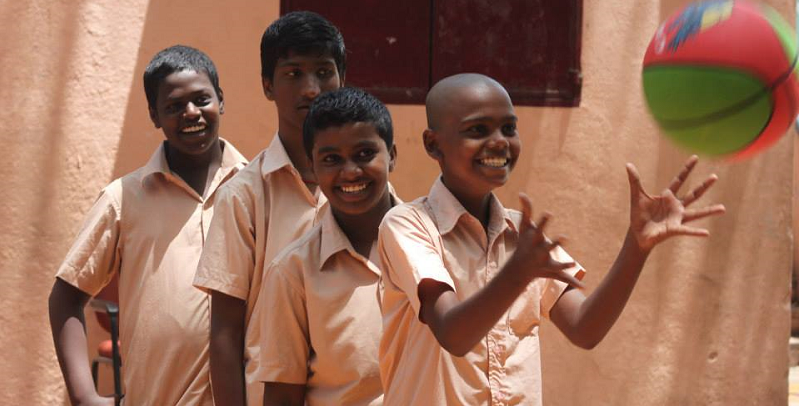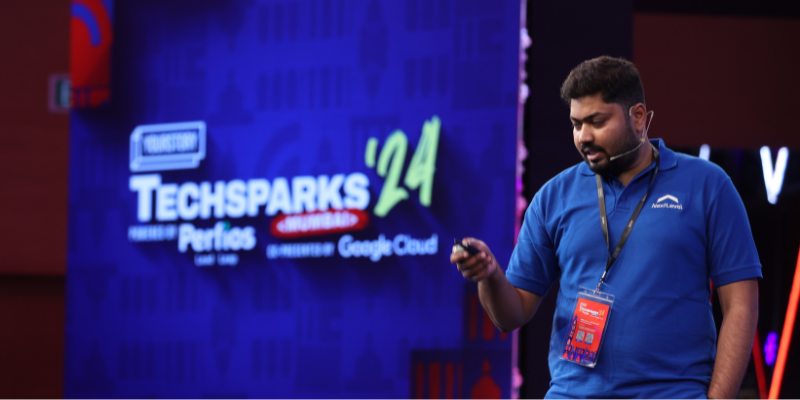Using basketball to push education levels in Chennai – Crossover Academy
The thought kept resonating in my mind about connecting back to an environment where someone had sponsored my mother, a woman born and raised in an orphanage in Chennai, to the point where she had received a university scholarship.
Shaun Jayachandran, an educator who also coaches basketball in the US observed the sports’ development in India and its relation to the low graduation rates of students (under 10%). With his heart being pulled by the strings of family roots, in the fall of 2010, Shaun registered ‘Crossover Basketball and Scholars Academy’ as a 501(c)3 non-profit organization in the US. He attended start-up boot camps at MIT and Northeastern, and attended lectures at Harvard that focused on India, and started to connect with other ‘sport for social development’ organizations.

Hoops creating hope
The purpose of Crossover is to impact education and student retention rates in India. Shaun comments, “The numbers tell us that nearly 20% of the global youth population is in India. And if conservatively, 90% never complete their education that equates to 18% of the global youth population who have an abundantly low ceiling of future purchasing power. This simply will further the gap between the haves and the have nots. The process for achieving our goal is to create connection for students between play and academic output.”

India is an extremely densely populated country where a game like basketball can thrive since it requires limited space and resources. Shaun adds, “In addition, by connecting our programme to athletics our students’ families understand this is not about attempting to produce a professional athlete but actually opening educational doors and opportunities for students regardless of their athletic ability.”
Even though the focus is not on grooming professional athletes, we can’t help but wonder that it might just be the place where another Satnam Singh is born. Satnam is the first Indian to be drafted (in 2015) to the NBA. Satnam was born in a small village and one fine day his father took him to a local basketball court, the rest as they say is history.
Ten days, every year
In 2012, with all the possible preparation in place, Crossover piloted their first programme in conjunction with St. Patrick’s School in Adyar, Chennai. The programme included 45 students and three Crossover faculty members who hosted the programme for eight days. The impact and results were apparent with students clamouring to learn more, to engage in critical thinking problems, and to take responsibility for their education. “As we continued to tweak the methodology – we saw remarkable growth within the students. We also began the process of attempting to create local connections – this included the American International School Chennai.”

The programme runs for ten days from 4pm – 7:30pm – targeting low-income (under 150 INR/day/family) government schools with Teach For India fellows. The programme has eight stations per day and students rotate through four per day – classroom sessions, conditioning or yoga, ball handling, and shooting/passing the ball. At the end of ten days, each child receives a Crossover shirt and basketball for their participation.

Post the programme, teachers are provided a curriculum of lessons that highlight the takeaways that have been drilled thought sports and keep students motivated and excited to be in school. Shaun adds, “As we move forward – we hope to have corporate sponsors who help recent college graduates do a year-long fellowship where they visit each student once a week to track their attendance and grades, and to keep playing basketball with them. The more metrics we are able to track – the stronger our ability to improve and tweak our programme to ensure the academic success of our students.”
2015 marks the fourth addition for Crossover Academy, with over 400 students for the second straight year. This year they have eight US university student-athletes, some of whom come from the Ivy leagues – Harvard, Princeton, MIT, Maryland, Tufts, Davidson, Arizona State, and Trinity.
Gender parity
Crossover has continually strived for a 50:50 ratio of boys to girls in their programme. “Gender equity is an important aspect we convey to our students and know that the process needs to begin at a young age.”

In the second year, the ratio went askew but in favour of girls! 65% of the participating students that year were girls who were excited to learn about leadership, character, teamwork, and communication. Shaun adds, “When speaking with their dads at pickup – so many stressed that they left work early in order to allow their girls to attend one of the few programmes that encouraged girl participation.”
Bit by bit to the summit
Shaun tells us that the idea, while seemingly made sense to those in education and athletic circles, did little to persuade investors and donors especially in the Indian-American community. It also confused government schools in India as they had trouble understanding how education and athletics entwined. Their initial programme ran on approximately 7,000 USD. Even since then – their budget has remained about 100 USD/student for the two week programme. “This is a huge coup in comparison to similar two week programmes in the US that run in excess of $300/week. When you are working towards long-term impact such as graduation rates – it becomes harder to have a quick photo opportunity for potential donors and sponsors and this is something that we continue to overcome the longer the programme runs and shows impact.”
Team and revenue model
Crossover continues to function as a lean startup with no salaried employees but only volunteers. The volunteer network is extremely strong with many US college and high school players participating in Crossover.Their revenue model currently consists of individual donors and small grants. They are in the process of applying to a ‘Beyond Sports Award’ and as to the grants offered by the US Consulate, US Embassy, and the US Department of State.
Parents’ thoughts on Crossover
“The typical reaction of the parents is often that of happiness that there are people who want to provide resources for this experience for their child. They often ask of us to extend the programme”.

Shaun’s ultimate dream is to a create tuition free schools that incorporate academics and athletics together in a way that they self-promote and create outstanding passionate community leaders. In five years, he expects to have a fellowship model in Chennai and begin expanding to other Indian cities.










![[Funding alert] Content platform Bolo Indya raises $300K pre-series A1 round](https://images.yourstory.com/cs/2/e641e900925711e9926177f451727da9/Imagetzwr-1596535293773.jpg)
